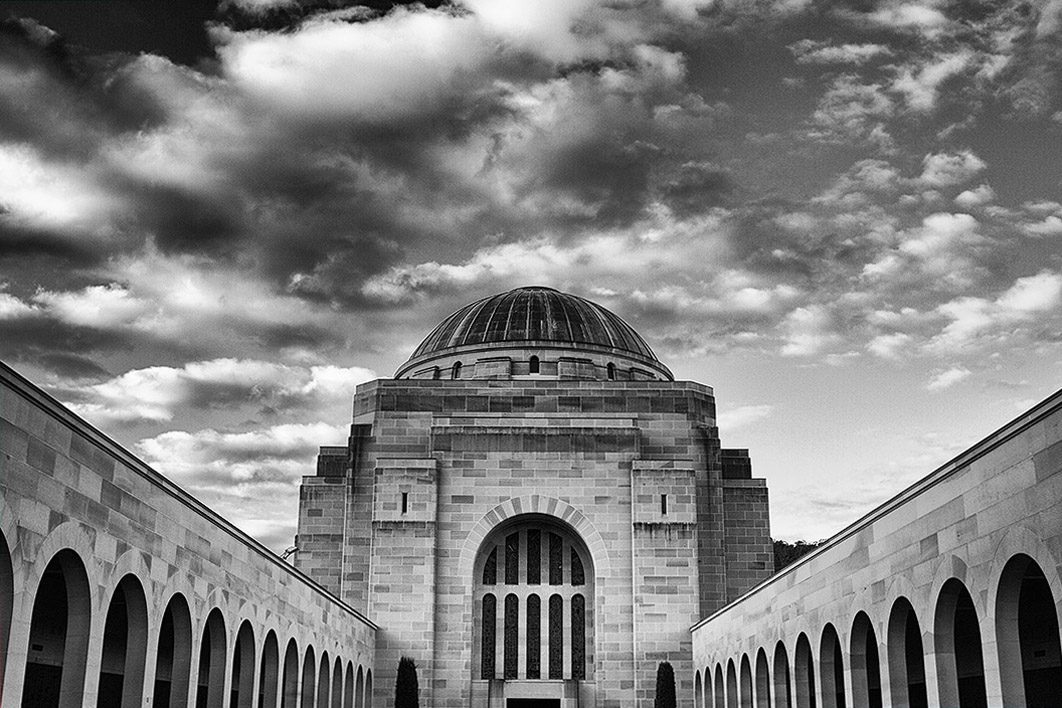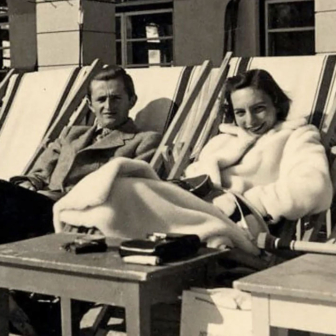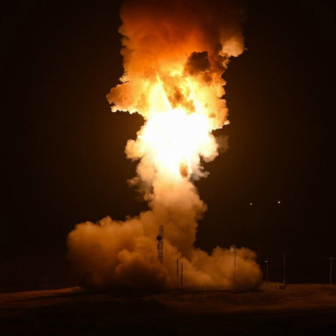Almost forty years have passed since it was first suggested that the Australian War Memorial might recognise conflict on Australia’s frontiers. For most of that time historians and others have argued that yes, it should, and the AWM has insisted that no, it won’t.
What, if anything, might break this stalemate? One possibility is that the critics might change their minds, or give up. Another is that the AWM might change its mind. A third is that an outside party will intervene, which in practice means a national government, which in turn means a Labor government — not because Labor is sure to do something but because the Coalition certainly won’t.
Are the critics wrong? Can the AWM be made to change its mind? If not, will Labor do the needful? Yes and no; no; and perhaps.
Should the critics change their minds?
The critics have surely been correct to insist that the only word in the English language to evoke the frontier reality is “war.” It is true, as the AWM has often insisted, that armed conflict between black and white didn’t observe the usual European conventions of declaring war, putting combatants in uniform, respecting rules of engagement, and so on. It is true that combat was mixed up with other kinds of relationship, including some that would be regarded as fraternisation, or worse, in European-style warfare. And it is true that most frontier conflict occurred before “Australia” existed as a political entity.
But the bigger truth is that deadly fighting between a people trying to keep what they had and a people who wanted to take it from them was a prominent and crucial strand in relationships “between two races in a single field of life” for well over a century, and that this warfare was profoundly formative, particularly for Aboriginal people but also for the rest of us, for relations between black and white, and for “Australia” in any sense of the term.
Those realities are so plain and so well documented that the implications for the AWM are often taken to be plain and incontrovertible too. It was a war; it’s a war memorial; so, it should be in. “Our” fallen are remembered; “theirs” should be too.
But that raises at least two questions. Why does it matter so much? And why can’t the frontier wars and their dead be commemorated elsewhere, as AWM spokesmen have often suggested?
The case for including the frontier wars in the AWM does need to be revised and beefed up, in several respects:
• The real problem is not in the AWM’s grasp of history, as is implied by much of the criticism. It’s in the history to which the institution belongs. The fact, scale and impact of violence by Europeans on Aboriginal people was routinely covered up, euphemised and winked at throughout the nineteenth century and then denied for much of the twentieth. It was covered up and forgotten so thoroughly that startling facts about the enormous cost of the conflict could still be unearthed as recently as 2014. This is the history to which the AWM and its refusal belong. Given that the matter to be avoided, concealed or denied was, precisely, war, the AWM can be regarded as concealment’s epicentre. Don’t mention the war — particularly in the war memorial.
• The AWM’s director likes to say that it represents “the soul of the nation.” But the AWM tells only the story of the shining us; it should also tell the story of the other us — not to extinguish or demean the former, but to get closer to representing the real us. The AWM says that its mission is to “assist Australians to remember, interpret and understand the Australian experience of war and its enduring impact on Australian society,” but it has been getting away with a confidence trick, asserting that of course that means real wars. Much of the criticism of the AWM (including my own) has fallen in with that logic, setting out to prove that the frontier wars do indeed meet the AWM’s requirements. The boot should be on the other foot: the frontier wars are the only genuinely Australian wars, fought in a distinctively Australian way. They were more formative of “Australia” than any of the major overseas wars or battles in which Australians have fought, Gallipoli not excepted. It is the frontier wars, not the European-style conflicts that followed, that should have prompted and defined an Australian War Memorial, and we can be sure that had there been more in the conduct of those wars to be proud of, a memorial would have been built long ago. That the wars were suppressed rather than commemorated belongs to that part of our history often referred to as the great Australian silence, and so does the AWM.
• Since the job wasn’t done when it should have been, we are in the position of having to put things right. That cannot be done by commemorating the frontier wars somewhere else, as the AWM likes to recommend. Shunted off to the Museum of Australia or to a dedicated memorial, the frontier wars would be seen as the not-in-the-War-Memorial wars, and therefore not real wars at all. They would also be seen as something to do with the Aborigines rather than “us.” What was done would be diminished and deflected, yet again. We would have whitewash history in one place, black armband in the other.
• An important and difficult question remains. Since the AWM is a museum as well as a shrine, and since some of those who died were ours (I write as a fourth generation Anglo-Saxon Australian), we are entitled to bring the frontier wars into the AWM, and must. But the vastly greater numbers of Aboriginal dead? Where and how they are commemorated is a matter for their descendants to decide. We should make the offer, but the response is theirs.
Might a statement of the case beefed up in these and perhaps other ways, and addressing the AWM’s arguments more directly, shift opinion within the AWM?
Can the AWM be persuaded to change its mind?
The AWM is an organisation of many parts: memorial, museum, research institute, publisher, impresario and tourism provider. The one thing it does very well is the one that provided its raison d’être: the commemoration of Australia’s “fallen.” Most Australians, and certainly those of my generation, would find it difficult to visit the AWM without being moved, perhaps particularly by the “wall of remembrance” and its 100,000-plus names, most of them of young men whose lives had scarcely begun.
The AWM’s other activities, accreted in the eighty-odd years since it was commissioned, are more controversial. Its displays have given some visitors (including me) the impression that in war it takes only one to tango — a very present Us versus an almost invisible Them. We are the Winners, and In the Right. The horrors of war, and the horrors visited on civilians (women particularly), survivors and survivors’ families, are subordinated to Boy’s Own Annual displays (the second world war Lancaster bomber chief among them). Most of a reportedly large collection of materials on anti-war and peace movements, by contrast, is in storage.
The AWM’s full-throated promotion of the Anzac myth jars with the actual Anzacs’ pride in a laconic, understated patriotism; it makes a great deal more fuss about their sacrifice than they did. The AWM has come increasingly close to being a theme park, offering a really popular “visitor experience” (seventeenth most-popular tourist landmark in the world, it claims, one ahead of the Pyramids). Its chase after numbers through the gate and dollars in the till ended up with this “sacred place,” this “soul of the nation” taking donations from arms manufacturers (and perhaps fudging the fact in a report to parliament). The AWM is yet another Australian institution that has lost its way in the rank undergrowth of the long boom.
The AWM’s long-serving director, Brendan Nelson, is apt to claim credit for much of this. As one recent critic put it, Nelson has a “genius for turning every story about the memorial and the World War I celebrations into a story about himself.” He has appointed himself the nation’s commemorator-in-chief, professing emotions that are either maudlin or synthetic and certainly self-serving. He gratuitously and improperly inserted himself and the AWM into the current controversy over allegations against Ben Roberts-Smith, declaring from his perch on the high moral ground that they constitute “one of the lowest blows I have ever seen” and represent yet another attempt to “tear down our heroes.”
Nelson has played shamelessly on legitimate feelings to support his empire-building, quoting an (unnamed) veteran to the effect that “we’ve already paid in blood, and whatever the government spends on the Australian War Memorial… will never be enough.” He has implied that the psychological wellbeing of veterans is a justification for spending half a billion dollars in grossly disproportionate recognition of post-1950 conflicts. Faced with Indigenous and other critics of gargoyles in the AWM’s courtyard that depict an Aboriginal man and woman among twenty-six varieties of native fauna, the AWM included them in its gargoyle replication and replacement project. “We are not going to take twenty-six down,” the director has said, “and put twenty-four back.”
Nelson has followed his immediate predecessor in deploying a string of rationalisations for shutting the door on the frontier conflicts and the many tens of thousands of people killed in them. He has claimed “much” unspecified “consultation” with historians as providing support for the AWM’s position when almost certainly the weight of opinion within the profession, including among military historians, has for some time been to the contrary. He asserts that the founding idea for the AWM and its Act both make recognition impossible, while boasting of the memorial’s self-initiated evolution. He has said that the frontier wars just can’t be accommodated because there isn’t room, while bidding for (and getting) half a billion dollars’ worth of new space. He has insisted that frontier conflict can’t be admitted because it didn’t amount to warfare, and in any event took place before “Australia” existed, but finds no difficulty in including other war-like and peace-keeping operations. Indeed, he has recently gone one further by suggesting the inclusion of border protection personnel as well. “It’s just extraordinary what these men and women do,” he is reported as saying. “We’ve had sailors who jumped into the sea to save drowning people.”
In all of this Dr Nelson has claimed the backing, even the direction, of his council, and there is no reason to doubt him. Nine of the council’s thirteen members are affiliated with the Australian Defence Forces, three as serving officers, five retired, and one Reservist. They include one air marshal, one rear admiral, one vice admiral, one lieutenant general, one major general, and one former commander of the SAS. Of the four non-military members, two are from “the private sector,” one is a director of a “family company” and one is a journalist (and author of bestselling books on the Great War and Gallipoli). The chairman is media mogul and Anzac buff Kerry Stokes. The council’s members hold between them three ACs, five AOs and one AM, as well as other medals and awards beyond counting. The average age is sixty-one years and would be sixty-three were it not for a single youth (in his thirties), a former corporal and VC winner. He and three of the female members are by some margin the most junior members of the council.
So far as can be told from their official biographies, none of the council’s members is drawn from or has any relationship with unions or other employees’ organisations, and none is from the “community sector” (although many are office-holders in philanthropic organisations) or from peace, nuclear disarmament or similar movements. There are no young people; none is black, brown, yellow or brindle or, with one exception, from a non-Anglo-Celtic background. None is Indigenous. Again, so far as can be seen in the official biographies, none is associated with or representative of former allies, much less former foes. The council is top-heavy, military-dominated, male-dominated, Anglo-dominated and deeply integrated into the Establishment. It is representative of and sees itself as defending the interests of those who are commemorated. It is entirely unrepresentative of the nominal commemorators, the Australian community. It offers a case study in the workings and consequences of what some economists would call “provider capture.”
The real charge against Nelson, his predecessor and the various members of council who have tagged along behind them is not that they are wrong about frontier conflict or that their arguments are contentless. As I suggested earlier, they are not contentless. What is objectionable or worse is that the AWM’s arguments are made in bad faith, and that the leadership of a major national institution has hidden behind rationalisations and half-truths while showing no willingness to engage in a serious conversation about a serious question, to learn, and to hold open the possibility of coming to a different view.
A third-party intervention?
If a beefed-up, refocused case wouldn’t persuade the AWM to change itself, would it persuade a Labor government to tackle the problem? In and of itself, no. It’s not that Labor lacks the necessary sympathies. As is suggested by its recently promulgated Reconciliation Action Plan — with its full-page pics of Whitlam and Lingiari, Rudd and a member of the Stolen Generations, and Keating at Redfern — Labor’s heart is in the right place, or at the very least it likes to think so. But on the question of the AWM in general and the frontier wars in particular, Labor is starting a long way back, and is spooked by the Anzac industry.
Labor’s national platform, adopted late last year, acknowledges the Uluru call for a “truthful telling of Australia’s history” and promises a Makarrata (or truth-telling) commission as a means to that end. But neither the platform nor the reconciliation plan mentions the AWM or, indeed, the frontier wars. It is difficult to see how the truth can be told without bringing the epicentre of truth avoidance into the picture. More concerning still, shadow minister Amanda Rishworth recently joined Nelson, Stokes and the prime minister on the platform for the “Australian War Memorial Development Launch,” where she was proud to announce that a Shorten government would honour the Coalition’s pledge of half a billion dollars to that cause. We are reminded that it was a Labor government that appointed Nelson in the first place.
Nelson’s term ends in a few months, and Stokes’s appointment comes up next year. As things stand, the best that could be hoped from a Shorten government would be improvements on Nelson (unless the present government makes a pre-emptive strike in the meantime) and Stokes. But if the AWM’s culture and high command are as I’ve suggested, even the best appointees would struggle. The task is to persuade Labor that the AWM should be the focus of a comprehensive review and rethink, and to address Labor’s concerns about the political hazards of doing so.
Managed badly it could go very wrong, of course. But it could also go very well. The past decade or so has seen a steep increase in the number of news stories and comment pieces about the issue in an ever-widening range of media. That might not blow the AWM’s house down, but it signifies something. It is possible that another of our subterranean cultural shifts is under way, the kind of thing that burst into the open in 1967 when, to near-universal surprise and delight, 90 per cent of Australians voted for what they understood to be equality for Aboriginal people. The council of the AWM, and its stance are anachronisms. For some, seeing the frontier wars alongside the heroics of Gallipoli and Flanders and Milne Bay would be a source of uncomprehending offence. For most of the rest, not to mention Aboriginal Australians? We’d ask as we did after the marriage-equality plebiscite: why did it take so long? •




